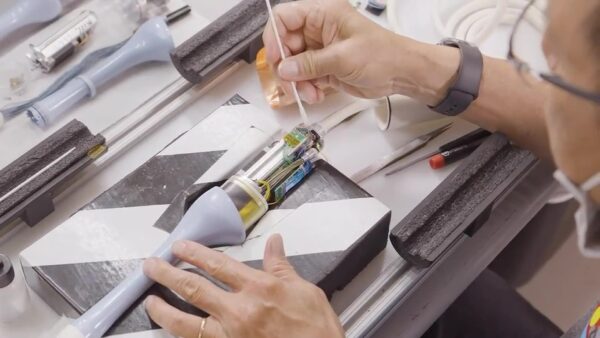What Hospitals Need To Know About FDA Guidance on Medical Device Repair
The FDA’s Final Guidance on repair versus remanufacturing of medical devices has important implications for hospital suppliers. It goes beyond simple terminology — new definitions and requirements have real impacts on patient safety and hospital liability. Misinformation can lead to reputational damage and even legal repercussions. Understanding the key differences between repair and remanufacturing — and the importance of compliance with this regulation — is crucial for ensuring the continued safe and effective use of medical devices within healthcare facilities.
The FDA’s Final Guidance
The FDA’s Final Guidance clarifies the distinction between repair and remanufacturing of medical devices — a distinction with significant implications. Here’s a breakdown of the key differences:
- Repair: This involves restoring a device to its original specifications. The goal is to ensure the device functions in a manner that is substantially equivalent to how it did when it left the original equipment manufacturer (OEM). To demonstrate this, comprehensive performance testing that mirrors what’s required for 510(k) clearance is essential.
- Remanufacturing: This occurs when a device undergoes a more significant repair activity that substantially changes its safety, efficacy, or intended use. Essentially, the device is no longer considered to meet the original specifications set by the OEM. In this case, the remanufacturer takes on the same level of regulatory responsibility as an OEM. This includes extensive testing and regulatory filings (510(k)) for each device model and intended service activity.
Testing is paramount in both scenarios. Repairs require testing to verify the device functions as intended post-repair. Remanufacturing necessitates even more rigorous testing to ensure the modified device meets safety and efficacy standards. Hospitals should verify that their suppliers are adhering to these testing requirements by requesting documentation of testing procedures and results.
 The importance of compliance
The importance of compliance
Ensuring compliance with the FDA’s Final Guidance on repair and remanufacturing isn’t just about following the rules; it’s about prioritizing patient safety and fostering a healthy healthcare environment. Hospital suppliers need to understand both the benefits of compliance and the potential consequences of noncompliance.
- The benefits of compliance
Rigorous testing ensures repaired or remanufactured devices function as originally intended. This minimizes the risk of malfunctions that could harm patients during critical procedures or lead to misdiagnoses. Proper testing identifies and addresses potential issues before the device is returned to the clinical setting, leading to more dependable performance. And by catching and addressing problems early, compliance can extend the lifespan of medical equipment, leading to potential cost savings for hospitals. - The consequences of noncompliance
The consequences of failing to comply with the FDA’s Final Guidance can be severe. Suppliers who violate these regulations by providing misleading information about their testing procedures or failing to conduct proper testing altogether could face significant fines or even FDA regulatory action. More importantly, if a device malfunction caused by improper repair or remanufacturing leads to patient harm, hospitals and their suppliers could be subject to lawsuits.
Put simply: Compliance with the guidance is a win-win situation. It safeguards patients’ well-being, protects hospitals from liability, and ensures a smoother, more cost-effective experience for everyone involved in healthcare delivery.

Where can hospital suppliers go from here?
The FDA’s Final Guidance creates a shared responsibility for hospitals and suppliers, one that ultimately strives to promote lifecycle compliance for medical devices regardless of their servicing requirements.
Hospitals need to prioritize partnering with suppliers who demonstrate a commitment to rigorous testing for both repairs and remanufacturing. Don’t hesitate to request detailed information about testing procedures and results. Look for accreditation from recognized organizations as an added layer of assurance regarding their adherence to quality standards.
Suppliers carry the weight of compliance. This includes standardizing robust testing methodologies to ensure both repaired and remanufactured devices meet the highest safety and efficacy standards. There’s also a need to develop and maintain clear documentation outlining testing procedures and results for each serviced device.
Compliance means better patient care
Navigating the FDA’s Final Guidance on repair and remanufacturing requires vigilance. Prioritizing patient safety should be the driving force. Hospitals can achieve this by demanding verifiable testing and partnering with accredited service providers. Meanwhile, suppliers must demonstrate clear adherence to the regulations through comprehensive testing and transparent communication.
By working together, both parties can ensure the continued reliability of critical medical devices and a higher standard of patient care.


 The importance of compliance
The importance of compliance